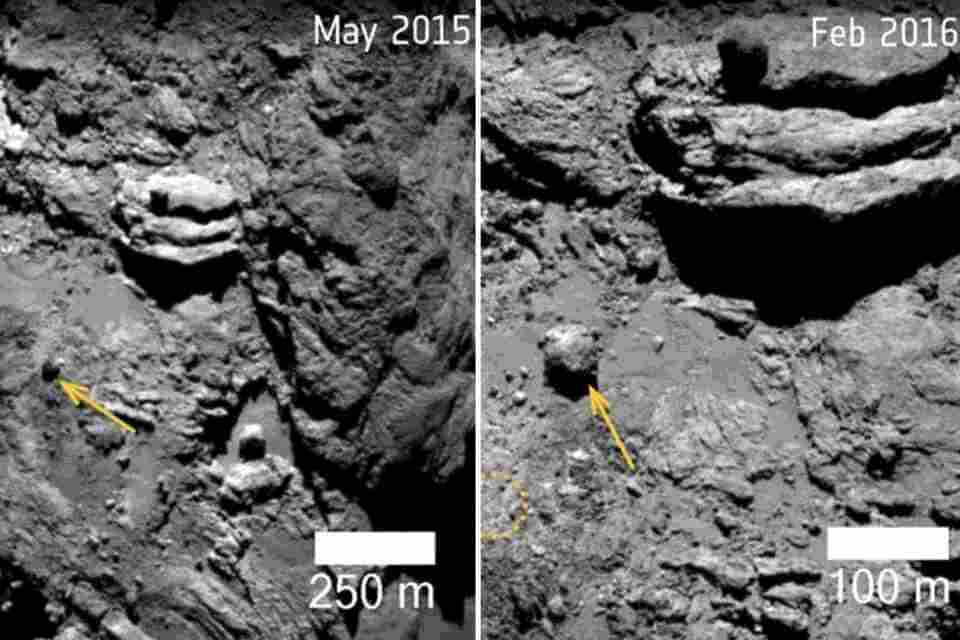Technology
Space agency wants YOU to study comet images and reveal solar system secrets – can you spot the difference?

THE European Space Agency has asked the public to assess photos of a comet in a ‘cosmic game of spot the difference’.
On Thursday, the ESA revealed Rosetta Zoo, a citizen science project launched with Zooniverse (a web portal owned and operated by the Citizen Science Alliance).
THE European Space Agency is asking the public to assess photos of comets in a ‘cosmic game of spot the difference’.
Rosetta/The European Space AgencyA 2014 and a 2016 model of the comet’s surface, side by side.[/caption]
Rosetta Zoo invites volunteers to engage in an online game of ‘spot the difference’.
And the subject in focus is a comet hundreds of millions of miles from Earth.
Between 2014 and 2016, the ESA’s Rosetta spacecraft orbited and studied the rock dubbed Comet 67P/Churyumov-Gerasimenko.
Now, the space agency is hoping that citizen scientists and volunteers can help them uncover secrets about the rocky object and, more broadly, the solar system.
Read more on comets
“By browsing through pictures collected by ESA’s Rosetta mission, you can help scientists figure out how a comet’s surface evolves as it swings around the Sun,” the ESA said in a statement.
Comets are “cosmic snowballs of frozen gases, rock and dust”, according to Nasa.
They’re made of leftovers from the formation of the solar system.
When a comet approaches the Sun, it forms a “tail” made of gas and dust particles that face away from the large star.
Most read in Tech
This particular rocky object was first detected in 1969 and has an elliptical, 6.5-year orbit around the Sun.
When the Rosetta spacecraft approached the comet in 2014, it became the first-ever to do so.
Shortly after, the spacecraft had a view of the comet as it moved through its orbit.
And with the help of the Sun, Rosetta got to capture different sides of the comet that are often hidden via its OSIRIS camera.
Still, scientists believe in this case that the human eye can prove more valuable than expensive machinery.
“Given the complexity of the imagery, the human eye is much better at detecting small changes between images than automated algorithms are,” said Sandor Kruk, an astrophysicist at the Max Planck Institute for Extraterrestrial Physics near Munich, Germany, who launched the citizen science project.
How does the game work?
“Anybody can use Rosetta Zoo online for free, without needing to sign up, install an app or program, or have any previous scientific experience,” the ESA said.
Users are then encouraged to spot the differences between as many or as few image pairs as they want
Read More On The Sun
“What does a primitive comet look like? No one knows, but with the help of volunteers, we can characterize how comets evolve now and understand the physics driving those changes,” planetary scientist Jean-Baptiste Vincent from the DLR Institute of Planetary Research in Berlin, Germany, said.
“Then we will be able to rewind the movie of cometary evolution all the way back to the origin of the Solar System,” he added.
We pay for your stories!
Do you have a story for The US Sun team?
Email us at exclusive@the-sun.com or call 212 416 4552.
Like us on Facebook at www.facebook.com/TheSunUS and follow us from our main Twitter account at @TheSunUS

